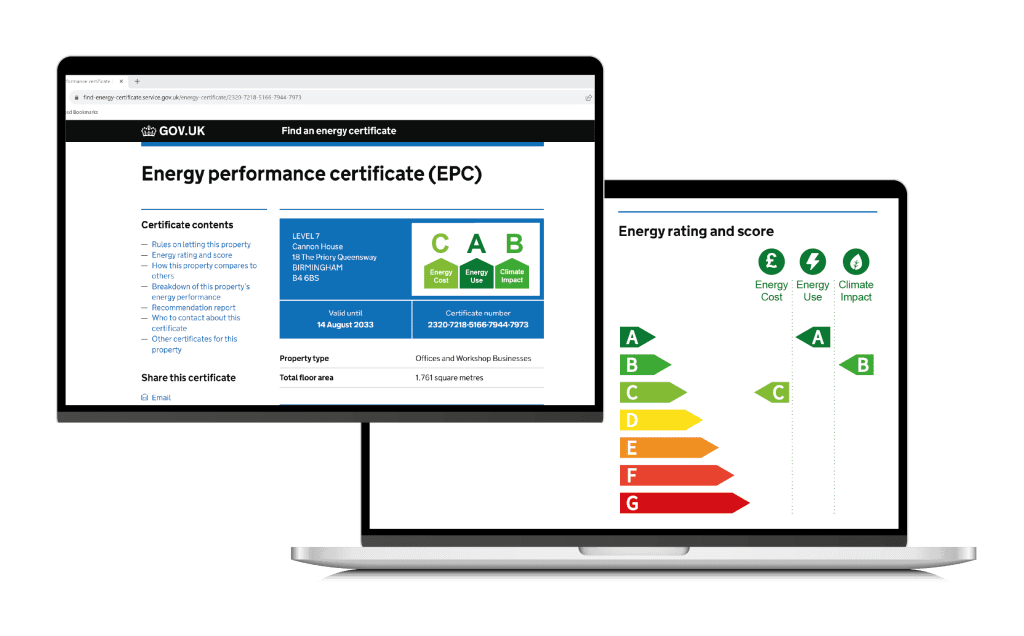As the UK gears up to decarbonise its built environment, the Energy Systems Catapult is calling for reform of the flawed Energy Performance Certificates to better reflect buildings’ real-world performance. Senior energy policy adviser Fay Holland looks at how EPCs can be made to work better for net zero
It’s no secret that building decarbonisation is one of the biggest challenges the UK faces on the path to net zero. There are about 30m buildings in the UK and collectively these produce approximately 30% of the nation’s carbon emissions.
The changes needed to decarbonise this sector depend on action from a wide range of actors, from commercial landlords to individual homeowners. Until policymakers do what is necessary to reduce buildings’ emissions, we will not achieve net zero.
With this in mind, Energy Systems Catapult has been exploring ways that Energy Performance Certificates (EPC) could be reformed to work better for net zero.
EPCs: Flawed from the outset
The limitations of the current EPC system are well known. Since EPCs were introduced in 2007, critics have sought to highlight the performance gap between the energy use modelled by the Standard Assessment Procedure (SAP), the methodology underlying EPCs, and real-world performance.
There is also confusion about what the EPC ratings are really telling us about our homes and their impact on climate change.
The headline EPC rating is the Energy Efficiency Rating, but despite its name, it is actually a measure of the cost of heating and lighting the property.
As electricity has a higher unit price compared with gas, this means that EPCs tend to favour fossil fuel heating systems over low-carbon alternatives, and adopting a low carbon heating system such as a heat pump can sometimes lead to a lower EPC rating.
Our research found that EPCs currently recommend new combi boilers for 25% of properties and if these recommendations were followed, the societal cost of the resulting excess carbon emissions could be as much as £57bn in the period up to 2050.
Recommendations for change
After speaking to innovators, policymakers and built environment experts about the pitfalls of the current system, the Catapult has recommended several changes designed to unlock the potential of EPCs to drive domestic decarbonisation.
Firstly, we would like to see the single headline metric replaced by a suite of outcome-based metrics reflecting different aspects of the building’s performance.
These would be:
- Energy Use: Reflecting the predicted total energy use of the fixed elements of the building, incentivising improvements to both the fabric efficiency and heating system.
- Climate Impact: Reflecting the emissions attributable to the property’s energy use.
- Energy Cost: Reflecting how the energy costs of the property compare with others.
These could be complemented by a Smart Building Rating, which would reflect the capacity of the property to provide flexibility to the energy system through the presence of smart technologies, such as batteries or thermal storage.
These changes would allow users to target the outcomes that they are interested in. For households looking to save money or policymakers making decisions on fuel poverty, the Energy Cost metric would provide a reliable measure.
For net zero policy or households looking to reduce their carbon footprint, the Climate Impact metric would clearly articulate the current position and help them to understand the effect of any changes under consideration. The Energy Use metric would give an overall view of the energy efficiency of the building, allowing users to track the improvement in a building’s performance over time.
Secondly, we would like to see greater use of real-world data and measurement of building performance within EPCs. Since EPCs were introduced, the availability of data on building’s performance has expanded significantly.

We now have smart meter data for a significant proportion of the housing stock and new innovative methods of using this to understand the thermal performance of buildings have been developed.
Bringing those into EPCs would allow consumers to have greater assurance that any changes they have made, such as installing wall or loft insulation, are having a real – not just assumed – impact on their property’s energy
performance.
Lastly, the Catapult is advocating moving to a system of Digital Building Passports, which would bring together relevant information about a building’s performance, enable greater integration with processes like Local Area Energy Planning and personalised retrofit advice.
These would draw on existing sources of information about buildings, bringing them together in a user-friendly portal. Long-term retrofit plans for the property could be stored in the building passport and when insulation or low carbon technology is installed this could be logged, enabling the EPC to be updated automatically.
The Home Energy Model
Since our report’s publication, the government has published a consultation on the Home Energy Model, which would replace SAP.
The Home Energy Model has been designed to demonstrate a property’s compliance with the Future Homes Standard – which is expected to apply to all new build properties from 2025 – and in the future will also be the methodology underlying EPCs.
There is a lot to welcome in the proposals: open-source methodology, faster recognition of new technologies and the potential for half-hourly modelling capability, which would enable better reflection of properties’ potential for flexible energy use. However, we would like to see more ambition to bring measured energy performance into the methodology.
An improved methodology is one piece of the puzzle but its impact on wide-scale decarbonisation of homes and other buildings will depend on how it is used by households, landlords and policymakers.
We believe our recommendations for EPC reform can complement the Home Energy Model and help to shape the next steps for understanding the energy performance of buildings.
With Scotland already having consulted on EPC reform and consultations for England and Wales expected later this year, we look forward to continuing to work with the government and innovators to make it easy and desirable for people to decarbonise their homes and properties.
Fay Holland
Senior energy policy adviser
Energy Systems Catapult
Tel: +44 (0)121 203 3700











![[VIDEO] GBC network calls for boldness at COP29 Baku, Azerbaijan, where COP29 will take place and where the GBC Network have deirected their message](https://www.pbctoday.co.uk/news/wp-content/uploads/2024/11/iStock-513054348-1-218x150.jpg)


